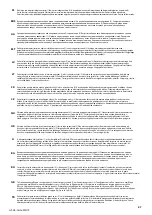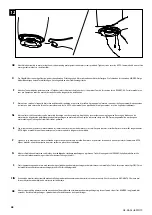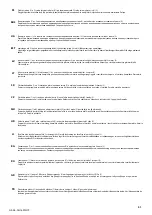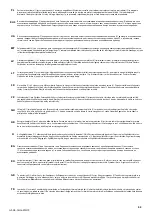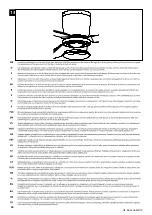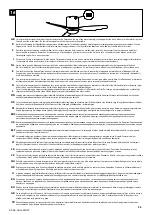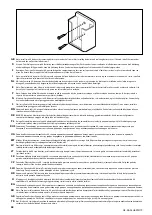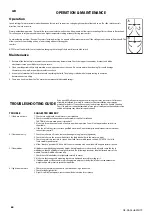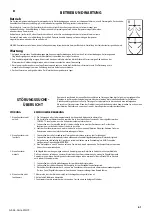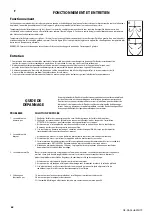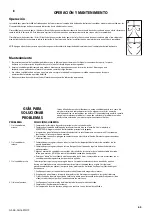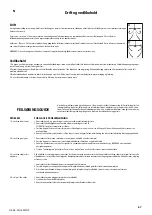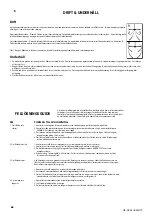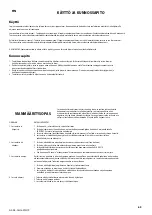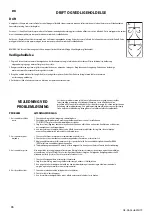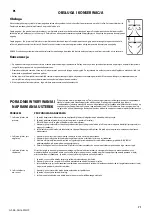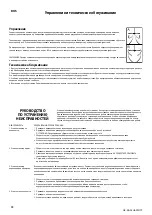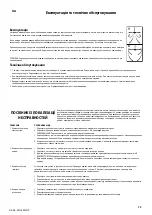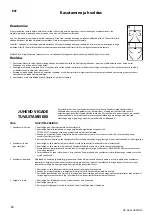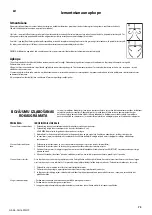
GS-26-Carla-WH19
60
GB
OPERATION & MAINTENANCE
Operation
Speed settings for warm or cool weather depend on factors such as room size, ceiling height, number of fans and so on. The slide switch controls
direction, forward or reverse.
Warm weather/down position - (Forward) Fan turns counterclockwise direction. A downward air flow creates a cooling effect as shown in illustration A.
This allows you to set your air conditioner on a higher temperature setting without affecting your comfort.
Cool weather/up position - (Reverse) Fan turns clockwise direction. An upward airflow moves warm air off the ceiling area as shown in illustration B. This
allows you to set your heating unit on a lower setting without affecting your
comfort.
NOTE: Turn off and wait for fan to stop before changing the setting of the forward/reverse slide switch.
Maintenance
1. Because of the fan’s natural movement, some connections may become loose. Check the support connections, brackets, and blade
attachments twice a year. Make sure they are secure.
2. Clean your fan periodically to help maintain its new appearance over the years. Do not use water when cleaning. This could damage
the motor, or the wood, or possibly cause electrical shock.
3. Use only a soft brush or lint-free cloth to avoid scratching the finish. The plating is sealed with a lacquer coating to minimize
discoloration or tarnishing.
4. There is no need to oil your fan. The motor has permanently lubricated bearings.
TROUBLE
1. If fan does not start:
2. If fan sounds noisy:
3. If fan wobbles:
4. If light does not work:
TROUBLESHOOTING GUIDE
If you have difficulty operating your new ceiling fan, it may be the result of incorrect
assembly, installation, or wiring. In some cases, these installation errors may be
mistaken for defects. If you experience any faults, please check this Trouble Shooting
Chart. If a problem cannot be remedied, please consult with your authorized electrician
and do not attempt any electrical repairs yourself.
SUGGESTED REMEDY
1. Check main and branch circuit fuses or circuit breakers.
2. Check terminal block connections as performed in step #8 of installation.
CAUTION: Make sure main power is turned off.
3. Make sure forward/reverse switch is firmly in up or down position. Fan will not operate when switch is in
the middle.
4. If the fan still will not start, contact a qualified electrician. Do not attempt to troubleshoot internal electrical
connections yourself.
1. Check to make sure all screws in motor housing are snug (not over tightened).
2. Check to make sure the screws which attach the fan blade holder to the motor are tight.
3. Some fan motors are sensitive to signals from Solid State variable speed controls. DO NOT USE a Solid
State variable speed control.
4. Allow “break-in” period of 24 hours. Most noises associated with a new fan will disappear after this period.
All blades are weighed and grouped by weight. Natural woods vary in density which could cause the fan to
wobble even though all blades are weight-matched. The following procedures should eliminate most of the
wobble. Check for wobble after each step.
1. Check that all blade holders are tightened securely to motor.
2. Make sure that canopy and mounting bracket are tightened securely to ceiling joist.
3. If blade wobble is still noticeable, interchanging two adjacent (side by side) blades can redistribute the
weight and possibly result in smoother operation.
1. Check to see that molex connector in the switch housing is connected
2. Check for faulty light bulbs.
3. If light kit will still not operate, contact a qualified electrician for assistance.
Summary of Contents for 72251
Page 54: ...GS 26 Carla WH19 54 15 ...
Page 59: ...59 GS 26 Carla WH19 ...


